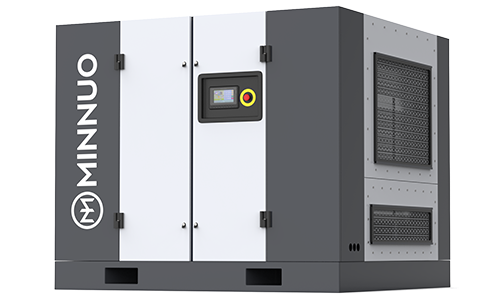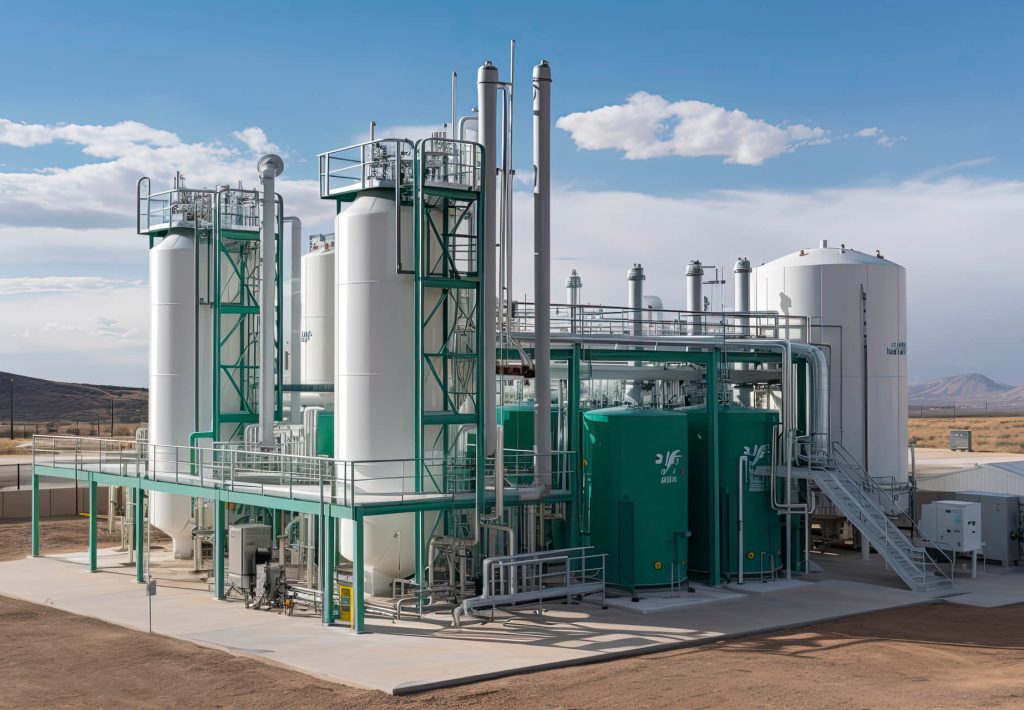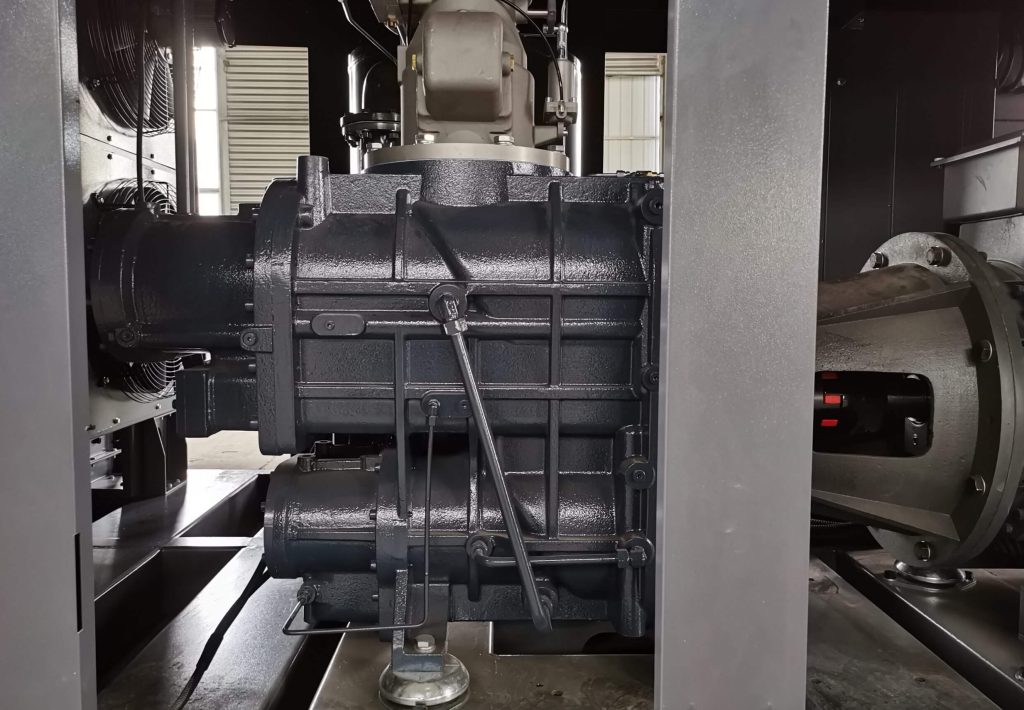As an indispensable piece of equipment in industrial production, the stability and reliability of air compressors directly affect production efficiency and safety. Among the various operating components of an air compressor, bearings are the core parts that support rotating elements, and their operating condition is critical. This article provides a comprehensive analysis of the causes behind abnormal bearing noise and proposes practical countermeasures, aiming to offer technical guidance for on-site maintenance.
Excessive bearing noise in air compressors is typically caused by abnormal fitting clearances, bearing wear and fatigue, poor lubrication, improper installation or alignment, manufacturing defects, and external resonance. For different causes, corresponding measures should be taken, such as adjusting clearance, repairing or replacing bearings, optimizing the lubrication system, improving installation precision, enhancing vibration and noise reduction design, and establishing a preventive maintenance system to ensure stable operation and extend equipment lifespan.

I. Overview of Bearings
(1) Definition and Classification of Bearings
Bearings are high-precision mechanical components primarily used to support rotating shafts or other moving parts, reduce friction during motion, and guide precise rotational or linear movements. Based on operating principles and contact forms, bearings are mainly divided into two categories:
- Rolling Bearings: These use rolling elements (such as balls or rollers) between the inner and outer rings to reduce friction. Featuring low friction, ease of installation, and high rotational speeds, they are widely used in all types of air compressors, especially high-speed rotary screw or centrifugal compressors.
- Sliding Bearings: These rely on an oil film formed between the journal and bearing shell to carry the load. With a simple structure and strong load-bearing capacity, they are particularly suitable for heavy-load, low-speed, or reciprocating compressor systems.
(2) Role of Bearings in Air Compressors
In air compressors, bearings are responsible for supporting rotating components (such as rotors and crankshafts), maintaining axial and radial alignment, and ensuring operational stability and sealing. For example, in screw compressors, rotor speeds can reach several thousand or even tens of thousands of revolutions per minute, requiring extremely high precision, rigidity, and wear resistance from the bearings. Once bearings fail, not only will noise significantly increase, but rotor eccentricity and clearance loss may also occur, reducing compression efficiency and potentially leading to mechanical seizure or catastrophic failure. Therefore, the condition of the bearings plays a decisive role in the safety and longevity of the entire air compressor system.
II. Analysis of Causes of Excessive Bearing Noise in Air Compressors
Bearings should operate with low noise and smooth motion under normal conditions. A significant increase in noise usually indicates an abnormality and may involve mechanical, lubrication, assembly, or design issues.
(1) Abnormal Clearance
- Excessive Clearance Between Bearing Shell and Journal: Sliding bearings rely on oil film load capacity to maintain shaft position. If the clearance exceeds the design tolerance (typically 0.02–0.05 mm), the oil film cannot provide sufficient support, and metal contact may occur, producing impact or knocking sounds.
- Uneven Wear or Deformation Between Journal and Bearing Shell: Long-term operation can lead to uneven wear due to contaminants or poor lubrication, causing oval shapes or local grooves. This non-uniform contact results in periodic impact noise and vibrations during rotation.
(2) Bearing Wear and Fatigue
Rolling bearings under high-load, high-speed conditions are prone to fatigue cracks, leading to spalling, pitting, or fragmentation. Typical manifestations include:
- Spalling or damage of rolling elements, causing impact sounds during rotation;
- Loosened or broken cage, leading to imbalance in rolling element spacing and producing periodic “clicking” sounds;
- Damage to inner or outer ring raceway, resulting in irregular rolling paths and causing high-frequency whistling and vibration.
As wear worsens, bearing clearance increases, and the noise evolves from low-frequency rumbling to high-frequency shrieking, often accompanied by noticeable heating.
(3) Poor Lubrication
Lubrication is critical to normal bearing operation. Any lubrication issue can drastically increase noise:
- Degraded or Contaminated Lubricant: Water, dust, or metal debris mixed in the lubricant causes abrasive wear and increases friction.
- Insufficient Lubrication: Delayed lubricant replenishment or poor oil passage design causes oil film rupture and direct metal contact, generating sharp screeching sounds.
- Incorrect Lubricant Selection: Different speeds, loads, and environments require appropriately viscous oils. Overly high or low viscosity affects oil film formation and generates noise.
(4) Improper Installation and Misalignment
Improper shaft and bore alignment during installation may result in:
- Eccentric inner ring rotation, causing irregular runout and periodic noise fluctuations;
- Incorrect preload (over-tightening or under-tightening), leading to early fatigue failure;
- Contaminated contact surfaces, where foreign matter during installation can deform contact surfaces and cause abnormal sounds.
(5) Manufacturing and Design Defects
Bearing quality directly affects its lifespan and noise characteristics, including:
- Inconsistent material hardness or impurities;
- Improper cage geometry;
- Non-compliant assembly clearances.
In addition, if the overall compressor structure does not consider bearing mounting stress, preload control, or thermal expansion, it may amplify resonance frequencies and turn the bearing into a noise source.
(6) Resonance and External Interference
As a complex mechanical system, air compressors have strong structural coupling among components, such as:
- Loose machine base;
- Frequent pipeline vibrations;
- Structural resonance between equipment and foundation.
These external vibration sources may transfer through mechanical structures to the bearings, causing amplified resonance and a sudden increase in noise.
III. Fault Diagnosis Methods
To accurately determine the source and type of noise, the following diagnostic tools can be used:
- Auditory Diagnosis: Using a listening rod or stethoscope near the bearing to distinguish “clicking,” “whistling,” or “low-frequency” sounds and identify the issue.
- Vibration Analysis: Using vibration analyzers (such as accelerometers) to obtain vibration spectrum data, where specific frequencies correlate with specific faults (e.g., cage failures or spalling).
- Infrared Thermography: Monitoring bearing temperature for abnormal rises, reflecting lubrication and friction status—particularly useful for high-speed equipment.
- Clearance Measurement: Using feeler gauges or instruments to check if bearing clearance exceeds allowable tolerance, indicating wear or installation issues.
- Oil Sample Analysis: Checking lubricant samples for iron particles, moisture, or contaminants to assess internal wear or corrosion.

IV. Noise Suppression and Maintenance Measures
Targeted actions should be taken for various noise causes:
(1) Adjusting Clearance
Based on bearing type:
- Replace suitable thickness bearing shells;
- Perform precision machining of journals or bearing surfaces;
- Control roundness and surface finish.
Ensure sliding bearing clearance is within 0.02–0.05 mm to avoid oil film rupture.
(2) Repair or Replace Bearings
- For rolling bearings with spalling or cracks, replace them immediately with high-quality, same-spec bearings.
- For minor journal and shell wear, consider:
- Electroplating repair;
- Laser cladding;
- Fine grinding and polishing.
These restore geometry and load capacity.
(3) Optimize Lubrication System
- Use properly graded lubricants with oxidation and emulsification resistance;
- Add oil temperature monitoring and level sensors to prevent overheating or low oil levels;
- Install automatic lubrication systems at key points to ensure continuous lubrication.
(4) Improve Installation and Alignment Precision
- Use laser alignment tools or dial indicators to check and adjust coaxiality, keeping rotor-to-motor or compression chamber misalignment within ≤0.02 mm.
- Standardize installation techniques and apply correct axial preload as per design.
(5) Vibration and Noise Isolation Design
- Place elastic rubber pads between machine base and foundation;
- Add flexible joints to piping connections;
- Apply soundproof cotton to the machine surface or bearing housing;
- Perform finite element analysis on machine structure to optimize resonance points.
(6) Establish Preventive Maintenance System
- Implement routine inspections, checking bearing vibration, temperature, and lubrication weekly;
- Install online bearing monitoring systems for real-time alerts;
- Replace and clean oil line filters to maintain oil cleanliness;
- Conduct professional training to enhance troubleshooting skills.
V. Conclusion
Abnormal bearing noise in air compressors not only creates noise pollution but may also lead to a cascade of equipment failures. Therefore, companies should prioritize bearing inspection and maintenance in compressor operation management, promptly identifying root causes and adopting scientific, efficient countermeasures to ensure stable operation and maximize service life.
Choosing MINNUO means choosing professionalism.






 Email
Email sales:+86 15366749631
sales:+86 15366749631

